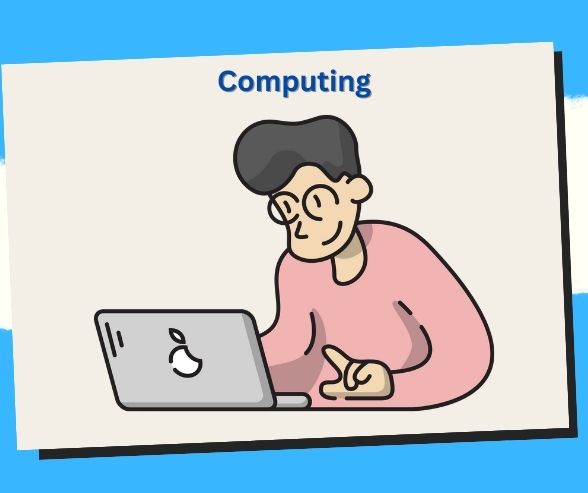
Unlocking Growth Potential: Customer Lifetime Value Analysis Strategies
Discover how customer lifetime value analysis can unlock growth opportunities for your business by identifying high-value customers and optimizing marketing strategies.
Nurturing Relationships: Guide to Customer Lifetime Value Analysis
In the bustling world of business, understanding the true value of your customers is essential for long-term success. Enter customer lifetime value (CLV) analysis – the practice of quantifying the potential revenue a customer is expected to generate throughout their relationship with your business. But amidst the sea of data and algorithms, it’s crucial not to lose sight of the human element. Join us as we explore the art of humanized CLV analysis, blending data-driven insights with empathy, intuition, and real-world anecdotes to unlock new levels of customer-centricity and business growth.
1. Demystifying Customer Lifetime Value Analysis: The Basics
Before we dive into the intricacies of CLV analysis, let’s first demystify the concept. Customer lifetime value, often abbreviated as CLV or LTV, is a metric that represents the total revenue a customer is expected to generate over their entire relationship with your business. It takes into account factors such as purchase frequency, average order value, and customer retention rates to provide a holistic view of a customer’s value to your business.
2. The Importance of Customer Lifetime Value Analysis
Now, let’s explore why CLV analysis is crucial for businesses of all sizes and industries. By understanding the lifetime value of your customers, you can:
- Identify High-Value Customers: CLV analysis allows you to identify and prioritize high-value customers who contribute the most revenue to your business over time.
- Optimize Marketing and Acquisition Strategies: Armed with CLV insights, you can tailor your marketing and acquisition strategies to focus on acquiring and retaining customers with the highest lifetime value.
- Enhance Customer Retention: CLV analysis can help you identify at-risk customers and implement targeted retention efforts to extend their lifetime value and foster long-term loyalty.
- Drive Strategic Decision Making: By quantifying the lifetime value of your customers, you can make more informed decisions regarding product development, pricing strategies, and resource allocation.
3. Humanizing Customer Lifetime Value Analysis: Going Beyond the Numbers
While CLV analysis offers undeniable benefits in terms of revenue optimization and strategic decision-making, it’s essential not to overlook the human element. Behind every CLV calculation lies a real person with unique needs, preferences, and aspirations. To truly harness the power of CLV analysis, businesses must blend data-driven insights with empathy, intuition, and human judgment. This humanized approach ensures that CLV strategies resonate with customers, align with organizational values, and drive sustainable growth.
4. Practical Tips for Implementing Customer Lifetime Value Analysis
Now that we’ve explored the fundamentals let’s equip you with some practical tips for implementing CLV analysis in your business:
- Gather and Clean Data: Start by gathering relevant data sources, including transactional data, customer demographics, and interaction history. Clean and preprocess the data to ensure accuracy and consistency.
- Calculate CLV Metrics: Use appropriate models and techniques to calculate CLV metrics such as average CLV, customer acquisition cost (CAC), and CLV-to-CAC ratio. Consider factors such as customer churn rate and discounting to refine your calculations.
- Segment Your Customers: Segment your customer base based on CLV metrics and other relevant factors such as purchase frequency, recency, and behavioral patterns. This allows you to tailor your marketing and retention strategies to different customer segments.
- Implement CLV-Driven Strategies: Use CLV insights to inform strategic decisions across your organization, including marketing, sales, product development, and customer service. Focus on maximizing the lifetime value of your customers while maintaining a positive customer experience.
- Iterate and Refine: Continuously monitor and evaluate the effectiveness of your CLV strategies and initiatives. Iterate and refine your approaches based on feedback, performance metrics, and changes in market dynamics.
Decoding Customer Lifetime Value Analysis 🔍
1. Understanding Customer Lifetime Value: Unveiling the True Worth of Your Customers 💰
Customer Lifetime Value (CLV) represents the total revenue a customer is expected to generate throughout their relationship with a business. By calculating CLV, businesses can prioritize their resources and efforts towards customers who contribute the most to their bottom line over time.
2. Importance of Customer Lifetime Value Analysis: Driving Strategic Decision Making 🎯
CLV analysis enables businesses to make informed decisions regarding customer acquisition, retention, and marketing investments. By understanding the long-term value of their customer base, businesses can allocate resources more effectively and maximize profitability.
3. Components of Customer Lifetime Value: Breaking Down the Equation 📈
CLV is typically calculated by multiplying the average purchase value, purchase frequency, and customer lifespan. By analyzing these components, businesses can gain insights into how to increase customer value and extend customer relationships.
4. Predictive Modeling Techniques: Forecasting Future Customer Value 🛠️
Predictive modeling techniques such as regression analysis, machine learning, and cohort analysis can help businesses forecast future CLV based on historical data. By leveraging these techniques, businesses can anticipate customer behavior and tailor their strategies accordingly.
5. Segmentation Strategies: Targeting High-Value Customers 🎯
Segmenting customers based on their CLV allows businesses to identify and prioritize high-value segments for targeted marketing efforts. By focusing on high-value customers, businesses can maximize ROI and enhance customer satisfaction.
6. Customer Acquisition Cost vs. Customer Lifetime Value: Achieving Profitability 🔄
Comparing Customer Acquisition Cost (CAC) to CLV helps businesses determine the profitability of acquiring new customers. By ensuring that the lifetime value of a customer exceeds the cost of acquisition, businesses can achieve sustainable growth and profitability.
7. Improving Customer Retention: Increasing Lifetime Value 🔄
Investing in customer retention initiatives can significantly impact CLV by extending the lifespan of customer relationships and increasing their overall value. By delivering exceptional customer experiences and building strong relationships, businesses can enhance customer loyalty and lifetime value.
8. Personalization and Engagement Strategies: Enhancing Customer Value ❤️
Personalizing marketing messages, offers, and experiences based on customer preferences and behaviors can drive customer engagement and loyalty, ultimately increasing CLV. By understanding their customers’ needs and preferences, businesses can foster long-term relationships and maximize lifetime value.
9. Measuring and Monitoring Customer Lifetime Value: Tracking Performance 📊
Regularly measuring and monitoring CLV allows businesses to track the effectiveness of their strategies and initiatives over time. By analyzing changes in CLV metrics, businesses can identify trends, opportunities, and areas for improvement.
10. Continuous Improvement: Iterating and Refining Strategies 🔄
CLV analysis is an ongoing process that requires continuous iteration and refinement. By analyzing feedback, measuring results, and adapting strategies accordingly, businesses can optimize their CLV and drive long-term success.
Benefits of Customer Lifetime Value Analysis 🌟
- Strategic Decision Making: Allocate resources effectively and prioritize initiatives based on customer value.
- Maximizing Profitability: Identify high-value customers and tailor strategies to maximize ROI.
- Targeted Marketing: Segment customers based on CLV for more personalized and effective marketing efforts.
- Enhanced Customer Retention: Increase customer loyalty and extend customer relationships to maximize CLV.
- Improved Customer Acquisition: Optimize acquisition strategies to attract high-value customers cost-effectively.
- Long-Term Growth: Foster sustainable growth by focusing on maximizing lifetime customer value.
- Competitive Advantage: Gain insights into customer behavior and preferences to stay ahead of competitors.
- Efficient Resource Allocation: Invest resources where they will have the greatest impact on profitability.
- Data-Driven Decision Making: Make informed decisions based on quantitative analysis of customer value.
- Customer-Centric Approach: Build strong relationships and deliver exceptional experiences to increase CLV.
Case Studies: Real-World Examples of Customer Lifetime Value Analysis 📊
- Amazon: Utilizes CLV analysis to identify high-value customers and tailor personalized recommendations and marketing messages, driving increased engagement and sales.
- Netflix: Leverages CLV analysis to optimize content recommendations and subscription offerings, leading to higher customer retention and lifetime value.
- Starbucks: Utilizes CLV analysis to segment customers and tailor loyalty rewards and promotions, driving increased frequency of visits and higher average spending.
- Airbnb: Leverages CLV analysis to identify and prioritize high-value hosts and guests for targeted marketing and retention efforts, resulting in increased bookings and revenue.
- Spotify: Utilizes CLV analysis to personalize music recommendations and subscription offers, increasing user engagement and loyalty over time.
- Sephora: Leverages CLV analysis to segment customers based on purchase history and preferences and tailor marketing campaigns and loyalty rewards, resulting in higher customer satisfaction and repeat purchases.
- Zappos: Utilizes CLV analysis to identify and prioritize high-value customers for personalized customer service and loyalty rewards, resulting in increased customer retention and lifetime value.
- Uber: Leverages CLV analysis to segment customers based on ride frequency and spending and tailor promotions and incentives to encourage repeat usage, resulting in increased customer loyalty and lifetime value.
- Nike: Utilizes CLV analysis to identify and target high-value customers for personalized marketing campaigns and product offerings, driving increased sales and customer satisfaction.
- Tesla: Leverages CLV analysis to identify high-value customers for targeted sales and marketing efforts, resulting in increased revenue and profitability.
Key Takeaways for Implementing Customer Lifetime Value Analysis 🚀
- Define clear objectives and goals for CLV analysis aligned with business strategy.
- Invest in data collection and analysis tools to gather and analyze customer data effectively.
- Choose the right CLV calculation method and predictive modeling techniques based on data availability and business needs.
- Segment customers based on CLV to identify high-value segments for targeted marketing and retention efforts.
- Implement personalized marketing and engagement strategies to increase customer loyalty and lifetime value.
- Monitor CLV metrics regularly and track changes over time to assess the effectiveness of strategies and initiatives.
- Foster a customer-centric culture focused on delivering exceptional experiences and building long-term relationships.
- Iterate and refine CLV analysis and strategies based on feedback, results, and changing market dynamics.
- Collaborate cross-functionally to align CLV initiatives with other business functions and objectives.
- Stay informed about emerging trends and advancements in CLV analysis techniques and technologies to remain competitive and drive continuous improvement.
FAQ about Customer Lifetime Value Analysis: Answering Your Burning Questions 🔥
- What is Customer Lifetime Value (CLV), and why is it important?
Customer Lifetime Value (CLV) represents the total revenue a customer is expected to generate throughout their relationship with a business. It’s important because it helps businesses understand the long-term value of their customer base and make informed decisions about resource allocation and strategy. - How is Customer Lifetime Value calculated?
CLV is typically calculated by multiplying the average purchase value, purchase frequency, and customer lifespan. The equation can vary depending on the business model and data availability. - What are some benefits of conducting Customer Lifetime Value analysis?
Benefits include strategic decision making, maximizing profitability, targeted marketing, enhanced customer retention, improved customer acquisition, long-term growth, competitive advantage, efficient resource allocation, data-driven decision making, and a customer-centric approach. - What are some common challenges businesses may face when conducting Customer Lifetime Value analysis?
Common challenges may include data quality issues, lack of expertise or resources, complexity of predictive modeling techniques, difficulty in defining customer lifespan, and the need for cross-functional collaboration. - How can businesses improve Customer Lifetime Value?
Businesses can improve CLV by focusing on increasing customer retention, acquiring high-value customers cost-effectively, personalizing marketing and engagement strategies, delivering exceptional customer experiences, and fostering long-term relationships. - What are some key metrics used to measure Customer Lifetime Value?
Key metrics may include average purchase value, purchase frequency, customer lifespan, customer churn rate, customer acquisition cost, and customer retention rate. - How can businesses use Customer Lifetime Value analysis to inform marketing strategies?
Businesses can use CLV analysis to segment customers based on value and tailor marketing messages, offers, and promotions to each segment. By focusing on high-value customers, businesses can maximize ROI and drive long-term profitability. - What role does data play in conducting Customer Lifetime Value analysis?
Data plays a crucial role in CLV analysis by providing insights into customer behavior, preferences, and purchasing patterns. Accurate and comprehensive data collection and analysis are essential for generating meaningful CLV insights. - How often should businesses conduct Customer Lifetime Value analysis?
The frequency of CLV analysis may vary depending on business objectives, industry dynamics, and data availability. However, businesses should aim to conduct CLV analysis regularly to track changes over time and assess the effectiveness of strategies and initiatives. - What are some future trends in Customer Lifetime Value analysis that businesses should keep an eye on?
Future trends may include advancements in predictive analytics and machine learning techniques for more accurate CLV predictions, the integration of real-time data streams for dynamic CLV analysis, and the use of AI-powered personalization for targeted marketing and engagement strategies.
Customer Lifetime Value analysis is a powerful tool for businesses seeking to understand and maximize the long-term value of their customer base. By calculating and analyzing CLV, businesses can make informed decisions about resource allocation, marketing strategies, and customer engagement initiatives, ultimately driving growth, profitability, and customer satisfaction. 🌟
Conclusion: The Human Touch in Customer Lifetime Value Analysis
As we conclude our exploration of customer lifetime value analysis, one thing becomes abundantly clear: while data may drive insights, it’s the human touch that ultimately determines success. By blending data-driven CLV analysis with empathy, intuition, and human judgment, businesses can unlock new levels of customer-centricity, loyalty, and profitability. So, embrace the art of humanized CLV analysis – where data meets empathy, and innovation meets humanity. 🚀
Key Phrases
- Customer Lifetime Value Analysis
- CLV calculation methods
- Customer retention strategies
- Predictive CLV modeling
- CLV optimization techniques
- CLV metrics interpretation
- CLV implementation best practices
- Revenue forecasting with CLV
- CLV and marketing ROI analysis
- Long-term customer value measurement
Best Hashtags
- #CustomerLifetimeValue
- #CLVAnalysis
- #CustomerRetention
- #CLVOptimization
- #DataDrivenMarketing
- #BusinessStrategy
- #CustomerRelationships
- #MarketingROI
- #RevenueForecasting
- #LongTermValue
Save/Share this story with QR CODE
Disclaimer
This article is for informational purposes only and does not constitute endorsement of any specific technologies or methodologies and financial advice or endorsement of any specific products or services.
📩 Need to get in touch?
Feel free to Email Us for comments, suggestions, reviews, or anything else.
We appreciate your reading. 😊Simple Ways To Say Thanks & Support Us:
1.) ❤️GIVE A TIP. Send a small donation thru Paypal😊❤️
Your DONATION will be used to fund and maintain NEXTGENDAY.com
Subscribers in the Philippines can make donations to mobile number 0917 906 3081, thru GCash.
3.) 🛒 BUY or SIGN UP to our AFFILIATE PARTNERS.
4.) 👍 Give this news article a THUMBS UP, and Leave a Comment (at Least Five Words).
AFFILIATE PARTNERS

World Class Nutritional Supplements - Buy Highest Quality Products, Purest Most Healthy Ingredients, Direct to your Door! Up to 90% OFF.
Join LiveGood Today - A company created to satisfy the world's most demanding leaders and entrepreneurs, with the best compensation plan today.



 Business Technology, Finance Technology & Information Technology
Business Technology, Finance Technology & Information Technology





